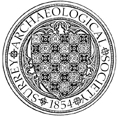Church Lammas, north-west Staines
A watching brief on mineral extraction works was carried out by SCAU for Greenhams Ltd. In late 1994, flint blades of unusual length began to be found by the site observer, N Marples. The growing collection of tools and debitage recovered was clearly Upper Palaeolithic and was in association with animal bones. English Heritage therefore funded excavation by P Jones of SCAU. Ditches of two successive field systems and the southern arm of an early post-medieval rectilinear stock enclosure were revealed.


